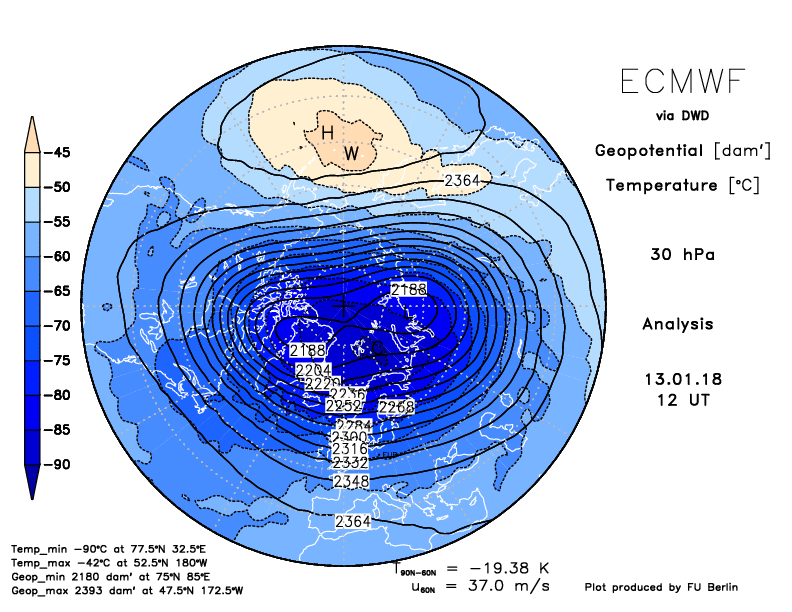During the day of January 13, the temperature reached -91°C (-131,8°F) locally at about 25 km above the Barents Sea in northern Scandinavia.
These extremely cold temperatures for the season are associated with a very powerful cyclonic vortex, also known as the polar vortex and centred not far from the North Pole. Because of its power, cold air remains confined over the Arctic regions at very high altitudes and is not attenuated or driven away by any external forcing.

These global conditions are not without consequences. They may be responsible for the formation of polar stratospheric clouds, especially known as iridescent clouds. Although these clouds produce remarkable luminous phenomena when the sun is behind the horizon, they can destroy ozone molecules.
On the other hand, a powerful polar vortex in the stratosphere can have significant consequences in terms of weather patterns over the Atlantic and Europe. The latter tends to reinforce low pressure activity over the Atlantic and at the same time tends to increase the occurrence of a western oceanic current over western Europe.
Translation : Sott




Reader Comments
to our Newsletter